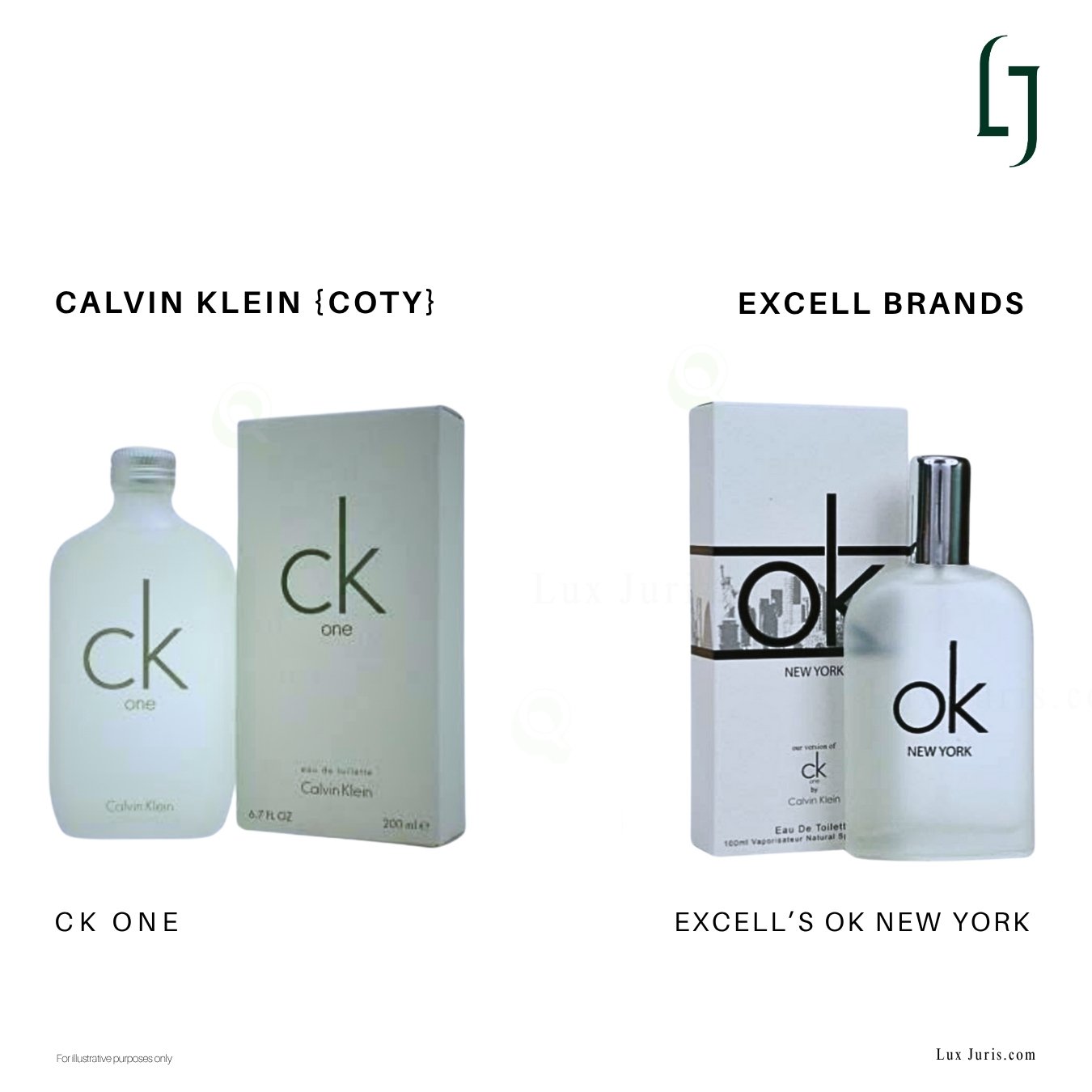Coty vs Excell Brands shows that copying a product, even when presented as a similar to or inspired by version, can still count as infringement. The case makes clear that how a product is described and marketed matters just as much as the product itself. While this dispute involved imitation perfumes sold as affordable alternatives to designer fragrances, the reasoning applies far beyond the fragrance industry. It illustrates how quickly a claim of inspiration can become a claim of deception when a brand’s identity is copied too closely.
The Parties
Coty and its related entities owned and licensed several leading fragrance brands, including Calvin Klein, Vera Wang and Lady Gaga. Each brand was built through a distinct combination of marks, packaging and consistent visual identity, supported by sustained international advertising.
Excell Brands, a New Jersey company, sold low-cost perfumes under its “Diamond Collection”. Each product was presented as a “version” of a Coty fragrance, with names such as Possession for Obsession, Serenity for Eternity and Love Story for Lovestruck. The boxes used the same colours, typefaces and bottle shapes as Coty’s originals. Each bore the phrases “Our Version Of (Coty fragrance)” on the front and “Not Associated With the Makers Of (Coty fragrance)” on the back, though Coty’s marks appeared far more prominently than Excell’s own.
Coty’s Claims
Coty alleged that Excell’s imitation line infringed its trademarks and trade dress, diluted its well-known marks, and misled consumers about origin and quality under the Lanham Act and New York law.
Trademark Infringement and Unfair Competition
Coty argued that Excell’s products were intentionally designed to resemble its own, creating confusion about source, sponsorship and connection. The imitation extended beyond product names to packaging and overall presentation. This was not mere inspiration but a deliberate attempt to make consumers believe that Excell’s perfumes were linked to Coty’s brands.
Trademark Dilution
Coty argued that its marks were famous and distinctive, and that Excell’s use of them on cheaper goods weakened their distinctiveness and lowered their perceived value. The association of luxury marks with low-cost imitations, Coty argued, weakened their ability to identify a single source and damaged their reputation.
False Advertising
Coty also alleged false and misleading advertising. The wording “Our Version Of” and “Not Associated With” did not clarify the relationship between the brands but instead reinforced a false sense of connection. The disclaimers were overshadowed by Coty’s own marks, which dominated the packaging, and by the close replication of Coty’s visual design. The overall impression suggested endorsement rather than independence.
Excell’s Defences
Excell raised two main arguments: laches and nominative fair use.
Laches
Excell argued that Coty had waited too long to bring its claims and that this delay caused prejudice. The court rejected the argument. It found that Coty had acted within the limitation period and that intentional infringers cannot rely on laches as a defence. Excell could show no prejudice, as it was already ceasing operations for unrelated reasons.
Nominative Fair Use
Excell’s central defence was that its references to Coty’s marks were nominative and fair. It argued that the phrases “Our Version Of (Coty fragrance)” simply identified the scent being imitated. The court disagreed. Nominative fair use is limited to what is necessary to identify another’s product without implying sponsorship. Excell’s use went far beyond this. It reproduced Coty’s marks in large, prominent text, closely copied the packaging and bottle design, and implied equivalence in quality and origin. The disclaimers did not cure the deception.
The Decision
The U.S. District Court for the Southern District of New York found Excell liable for trademark infringement, trade dress infringement, unfair competition, dilution and false advertising under federal and state law. The only claim dismissed was counterfeiting, as Excell’s perfumes were sold as “versions” rather than as Coty originals. Coty was granted an injunction and awarded Excell’s profits, though no additional damages or legal fees.
The ruling described Excell’s conduct as deliberate imitation designed to exploit Coty’s reputation. It found that Excell’s disclaimers and comparative phrasing did not reflect transparency but were tools to attract consumers by association.
For Designers and Brands
The case is instructive for anyone building or referencing established identities in design or commerce. It confirms that comparative reference is lawful only when it is genuine, necessary and subordinate to one’s own branding. When a mark or trade dress is used prominently, or when packaging suggests endorsement, the defence of fair use collapses.
It also highlights the weakness of disclaimers. Once the dominant impression of a product evokes another’s identity, disclaimers cannot undo the confusion. For brand owners, the decision shows the importance of trade dress protection and the evidential strength of showing deliberate imitation.
Closing Note
Coty versus Excell Brands shows that in trademark law, the line between inspiration and infringement is determined not by intent but by impression. A claim of “our version” cannot hide a dupe when every visual cue points back to another’s work. The case also illustrates that copying another brand too closely, even as a reference, undermines distinctiveness, and that being clear about origin is not a formality but the basis of a strong brand.
Source:
